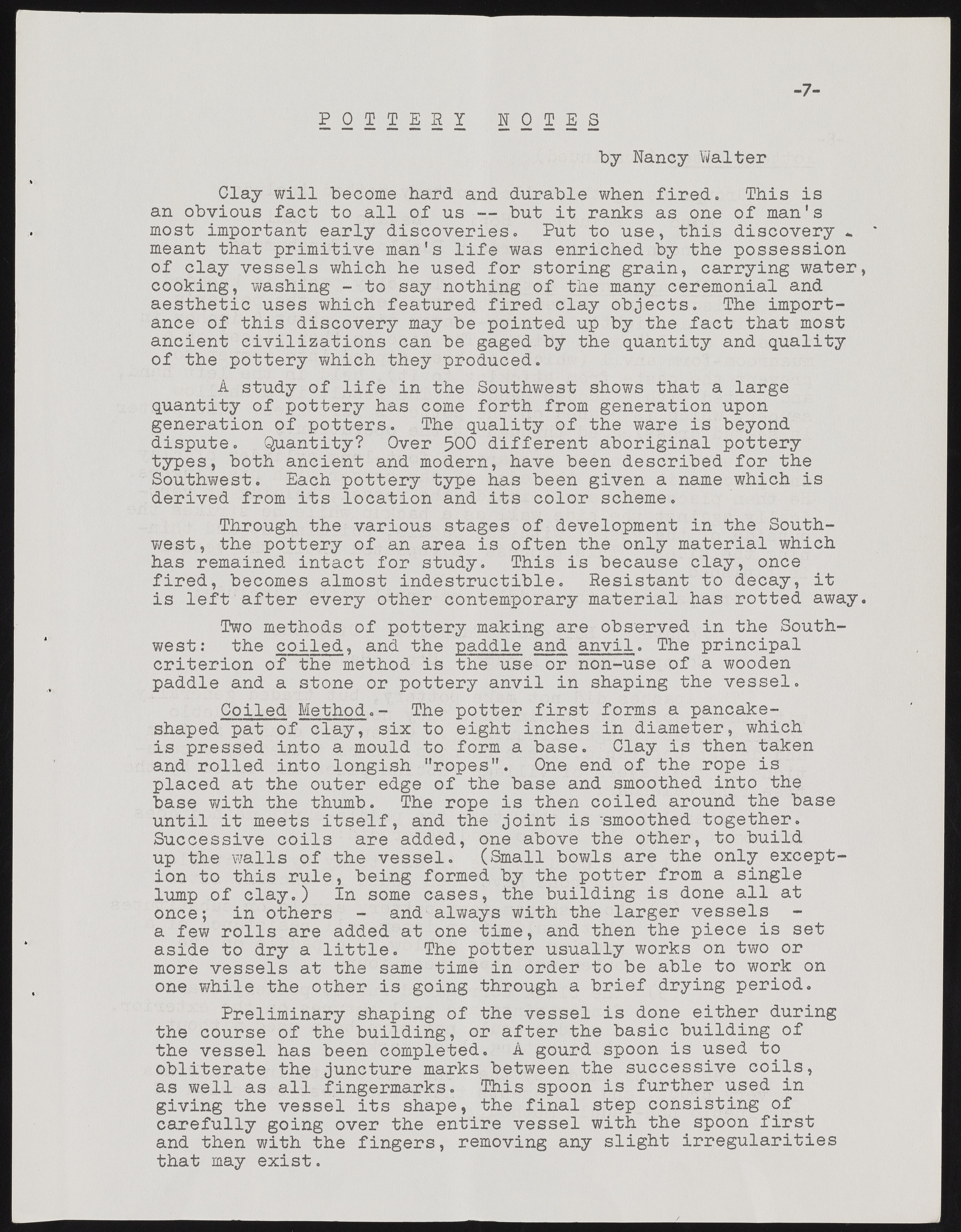Copyright & Fair-use Agreement
UNLV Special Collections provides copies of materials to facilitate private study, scholarship, or research. Material not in the public domain may be used according to fair use of copyrighted materials as defined by copyright law. Please cite us.
Please note that UNLV may not own the copyright to these materials and cannot provide permission to publish or distribute materials when UNLV is not the copyright holder. The user is solely responsible for determining the copyright status of materials and obtaining permission to use material from the copyright holder and for determining whether any permissions relating to any other rights are necessary for the intended use, and for obtaining all required permissions beyond that allowed by fair use.
Read more about our reproduction and use policy.
I agree.Information
Digital ID
Permalink
Details
More Info
Rights
Digital Provenance
Publisher
Transcription
P 0 T T E H I N O T E S by Nancy Walter a Clay will become bard and durable when fired. This is an obvious fact to all of us — but it ranks as one of man's * most important early discoveries. Put to use, this discovery * * meant that primitive man's life was enriched by the possession of clay vessels which he used for storing grain, carrying water, cooking, washing - to say nothing of the many ceremonial and aesthetic uses which featured fired clay objects. The importance of this discovery may be pointed up by the fact that most ancient civilizations can be gaged by the quantity and quality of the pottery which they produced. A study of life in the Southwest shows that a large quantity of pottery has come forth from generation upon generation of potters. The quality of the ware is beyond dispute. Quantity? Over 500 different aboriginal pottery types, both ancient and modern, have been described for the Southwest. Each pottery type has been given a name which is derived from its location and its color scheme. Through the various stages of development in the South- ?/est, the pottery of an area is often the only material which has remained intact for study. This is because clay, once fired, becomes almost indestructible. Resistant to decay, it is left after every other contemporary material has rotted away. Two methods of pottery making are observed in the Southwest: the coiled, and the paddle and anvil. The principal criterion of the method is the use or non-use of a wooden paddle and a stone or pottery anvil in shaping the vessel. Coiled Method.- The potter first forms a pancakeshaped pat of clay, six to eight inches in diameter, which is pressed into a mould to form a base. Clay is then taken and rolled into longish "ropes". One end of the rope is placed at the outer edge of the base and smoothed into the base with the thumb. The rope is then coiled around the base until it meets itself, and the joint is 'smoothed together. Successive coils are added, one above the other, to build up the walls of the vessel. (Small bowls are the only exception to this rule, being formed by the potter from a single lump of clay.) In some cases, the building is done all at once; in others - and always with the larger vessels a few rolls are added at one time, and then the piece is set aside to dry a little. The potter usually works on two or more vessels at the same time in order to be able to work on , one while the other is going through a brief drying period. Preliminary shaping of the vessel is done either during the course of the building, or after the basic building of the vessel has been completed. A gourd spoon is used to obliterate the juncture marks between the successive coils, as well as all fingermarks. This spoon is further used in giving the vessel its shape, the final step consisting of carefully going over the entire vessel with the spoon first and then with the fingers, removing any slight irregularities that may exist. /

